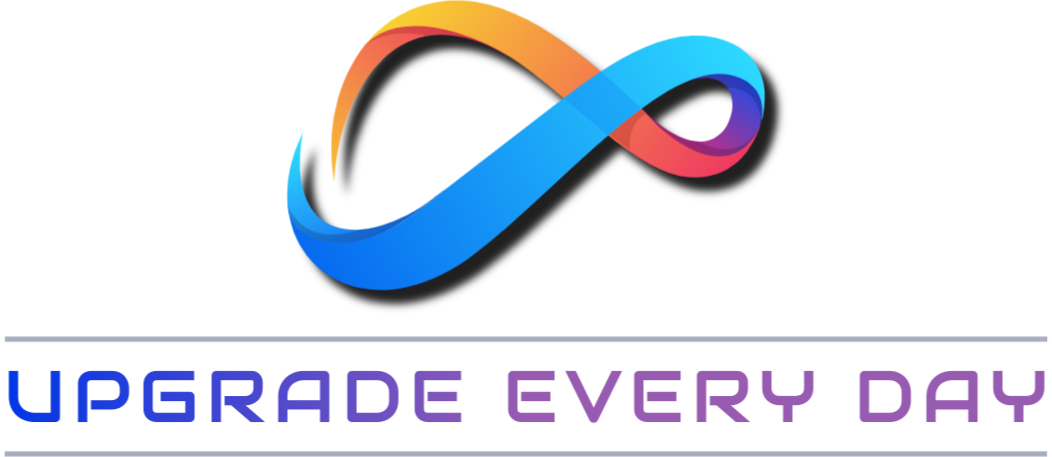Did you know that 63% of businesses find it hard to know if content marketing actually makes a profit?
Content marketing is key in good marketing plans. But big companies struggle to see if their content works well. This makes it hard to use budgets wisely and get good results.
This piece will show you why content marketing ROI measurement really matters. I’ll give you tips on how to figure out and make your content marketing more effective. Knowing your content’s impact helps you choose better strategies for your business.
Key Takeaways:
- It’s critical to measure content marketing ROI for budget, content quality, and goals.
- The ROI formula is (Net Profit / Cost of Investment) x 100.
- Important metrics are conversion rate, customer value, traffic sources, and bounce rate.
- Tools like Google Analytics, social media stats, and marketing automation help measure ROI.
- While data analysis is key, understanding results with insight leads to better strategies.
Understanding the Basics of Content Marketing ROI
Content Marketing ROI helps businesses see how well their content campaigns are working. It looks at the money made versus the money spent. This is key for deciding budgets, boosting content quality, and setting goals.
The ROI formula is (Net Profit / Cost of Investment) x 100.
By working out content marketing ROI, companies learn the worth of their content. They can then wisely pick how to use their budget. Also, they focus on what works best for their goals.
Content marketing ROI measurement means checking how content boosts sales and meets your business goals. It shows which strategies are good and which need work. With this data, businesses can make their content efforts better. They reach their audience more effectively too.
The Importance of Content Marketing ROI Measurement
Measuring your content marketing ROI is key. It helps you wisely spend your budget. You also get to improve your content’s quality and set achievable goals. By checking how well your strategies work, you can make choices using data. This can boost your marketing and investment returns.
Understanding your marketing’s ROI offers major insights. It shows you the most effective strategies. This knowledge lets you spend your budget wisely on what’s most successful. You’ll know what’s working. This means you can make content that suits your audience better.
Looking at your ROI closely lets you aim for doable goals in your next campaigns. With the right tracking, you can set realistic targets and watch your progress. It’s crucial for tweaking your plans, making your content better, and leading in your field.
“Measuring your content’s marketing impact is more than just numbers. It’s about smart insights that lead to success. Knowing your ROI helps make choices that meet your business goals and customer demands.”
Spending on measuring your content ROI is well worth it. It shows areas where you can do better. By diving into your data, you spot trends and hurdles. This helps you adjust your strategies for success.
Benefits of Measuring ROI in Content Marketing:
- Optimise budget allocation for maximum impact
- Improve content quality and relevance
- Set realistic goals and benchmarks for success
- Identify areas for improvement and optimization
- Drive data-driven decision making
Current analytics tools, like Google Analytics, make ROI measuring easier. They give insights on traffic, what your audience does, and how effective your content is. This helps in better decision-making and ROI tracking.
The value of human understanding in ROI analysis is huge. Mixing data studies with knowledge of your audience’s tastes and behaviours is powerful. It gives deeper insights and can refine your marketing strategies.

| Metric | Description |
|---|---|
| Conversion Rate | The percentage of visitors who take the desired action, such as making a purchase or filling out a form, after engaging with your content |
| Customer Lifetime Value | The predicted revenue a customer will generate over their entire relationship with your business |
| Traffic Source | The channels that drive the most valuable traffic to your website |
| Bounce Rate | The percentage of visitors who leave your website after viewing only one page, indicating a lack of engagement |
Calculating Content Marketing ROI
To check how well you’re doing with content marketing, knowing your ROI is key. This figure tells you if your campaigns are working well. It shows the value of every pound spent on content marketing. Using your ROI helps you choose what to do next. You can fix your plans to get better results.
The formula for Content Marketing ROI looks like this:
ROI = (Net Profit / Cost of Investment) x 100
Here, the Net Profit is how much money your marketing made. The Cost of Investment is all the money you spent.
When you work out this ratio, you see how well your marketing is doing. This tells you if your plans are working. It helps you know what to ask for in the future too.
The Significance of Calculating Content Marketing ROI
Figuring out your Content Marketing ROI is really about finding what works. It shows you which strategies are giving you the best results. And which ones might need a change.
Knowing your marketing’s financial benefit helps you spend wisely. You can focus on what makes the most money. And stop doing things that aren’t working. This keeps your budget in check too.
It also proves to others the worth of what you’re doing. It shows how effective and important your marketing is. This can help get you more money for future projects.
Interpreting and Using ROI Data
Getting your Content Marketing ROI is just the start. It’s what you do with that number that makes a difference. You need to look deeper to really understand why you got that result.
Look at different types of content, where you put it, and which campaign worked the best. Find out what topics your audience loves. Or which way of reaching them works the best.
This analysis will guide your next steps. It allows you to tweak your marketing for better results. Then you can give your audience just what they like.
Remember, content marketing ROI measurement is something you always do. Markets change. People’s tastes change. Keeping track helps you stay ahead and adjust when needed.
Key Metrics for Measuring Content Marketing ROI
Measuring content marketing success involves looking at several key metrics. These numbers give deep insights into how your content is doing. By understanding them, you can choose the best path forward for your content strategy.
Let’s dive into some of the most critical metrics for content performance:
- Conversion Rate: This shows the percentage of visitors who become customers after seeing your content. It helps you see which content is the best at turning leads into sales.
- Customer Lifetime Value: This metric tells you how much a customer might spend over time. It guides where you put your resources, aiming them at customers likely to spend more.
- Traffic Source: Knowing which channels bring the best traffic is key. It lets you focus your attention where it matters most, attracting your ideal audience.
- Bounce Rate: Bounce rate is the percentage of visitors who leave after one page. High rates might signal a problem with your content. Low rates could mean people find your content valuable and keep exploring.
Keeping track of these metrics gives you a clear view of your content’s success. Using this data, you can tweak your strategy to make your content even more effective over time.

Leveraging Analytics Tools for Content Marketing ROI
Measuring your Content Marketing ROI is vital, and analytics tools are key. They offer insights into your content strategy’s different parts. Let’s explore some top tools for tracking and measuring how well your content is doing.
Google Analytics
Google Analytics helps you keep tabs on website traffic and audience actions. It shows which content pulls in the most traffic. Plus, it details how users move through your site and what channels lead to actual sales. This tool lets you tweak your content strategy using real-time info.
Social Media Analytics Platforms
Platforms like Facebook and X (formerly Twitter) come with their own analytics. They let you look at how people react to your posts, such as likes and shares. This feedback is crucial in adapting your content to better meet your audience’s needs. So, keeping an eye on your social media performance is a must.
Marketing Automation Tools
Automation tools like HubSpot and Marketo are great at tracking the customer journey. They provide deep insights into how content influences sales and customer behaviour. This understanding allows you to adjust your strategy for better returns.
These tools all help you understand how your content marketing is doing. By using the insights they offer, you can improve your strategy. The real trick is to regularly check the data and use it to make your content strategy better.
| Analytics Tool | Key Features |
|---|---|
| Google Analytics | Website traffic tracking, audience behaviour analysis, content effectiveness evaluation |
| Social Media Analytics Platforms | Performance tracking across social media channels, engagement metrics analysis |
| Marketing Automation Tools | Lead tracking, conversion analysis, customer journey monitoring |
Used together, these tools give you a complete picture of your content’s ROI. With them, you learn how your content is performing and can make smart, data-based adjustments. Remember, tracking your ROI is key to making your marketing successful and impactful.

The Human Touch in Content Marketing ROI
While data analysis helps measure success, the human touch is crucial too. As a content marketer, combining data with knowing what the audience wants is key. This mix helps us see the real impact of our work.
Improving constantly is vital in content marketing. By looking at ROI data, we find out what works and what doesn’t in our strategies. This helps adjust how we make and share content.
The Power of Understanding Your Audience
“The better you understand your audience, the better you can tailor your content to their needs and preferences.”
Knowing your audience well is essential for making your content matter to them. When we look at ROI data, we learn about our audience’s likes, dislikes, and how they interact with our content. This knowledge shapes our content strategy. It helps us create content that really speaks to our audience.
The Path to Continuous Improvement
“Analysing ROI data enables us to evolve and improve our content strategies over time.”
Success in content marketing is about constant improvement. Looking at ROI data helps us see what works and what doesn’t. With this information, we can make our content strategies better over time.
Using data and understanding people, we can make our content marketing better and achieve more success.

Summing It Up
Content marketing ROI measurement is like having a map for your marketing journey. It helps guide your steps wisely. By knowing the value of your content, you can make choices that boost your online presence.
It’s important to look at how effective your content marketing is. This is through analysing your content and measuring ROI. Doing this is key for deciding where to spend your money, how to make your content better, and what goals to set.
It’s good to use tools like Google Analytics and social media insights to measure ROI. But remember, data doesn’t tell the whole story. It should be combined with a personal understanding. This keeps your marketing efforts successful by constantly improving and adapting.
FAQ
What is content marketing ROI?
Content marketing ROI means looking at how effective your content marketing is. It compares the money you make with what you spend on content.
Why is measuring content marketing ROI important?
It’s key for choosing where to put your money, making better content, and setting goals. By understanding what works best, you can spend your money smarter. Also, you can make your content better for your audience.
How do I calculate content marketing ROI?
You can find it using this formula: ROI = (Net Profit / Cost of Investment) x 100. This shows how much you earned for each dollar spent on content marketing.
What are the key metrics for measuring content marketing ROI?
Important metrics to check include conversion rate, customer lifetime value, where your traffic comes from, and bounce rate. These show how well your content is turning visitors into customers, their long-term value, where the good traffic is from, and how many leave your site after one page.
What tools can help in measuring content marketing ROI?
Use tools like Google Analytics, social media on your platforms, and marketing automation. They look at traffic, what users do, how well your content works, and track leads. They make it easier to understand and measure ROI.
How can I add a human touch to content marketing ROI analysis?
Data is crucial, but human understanding is vital too. Mix data with audience insights and behaviour understanding. Always aim to improve your content marketing. Look at ROI trends regularly to find what works or doesn’t, and adjust your strategies based on that.





